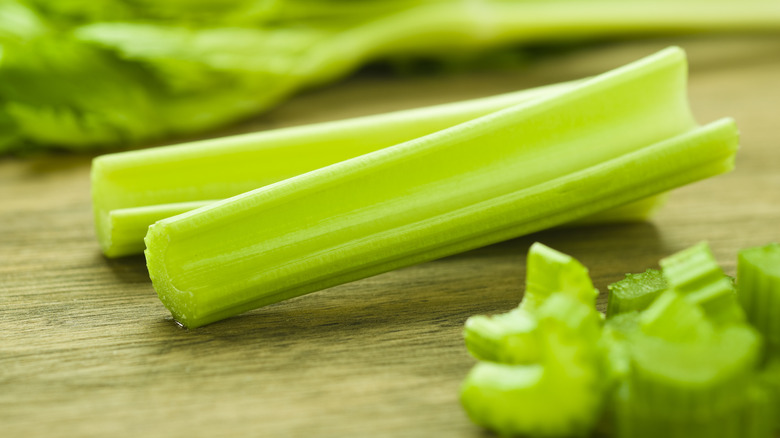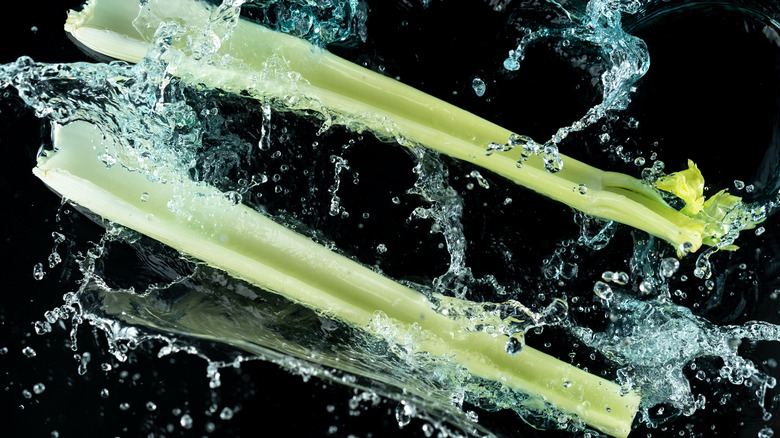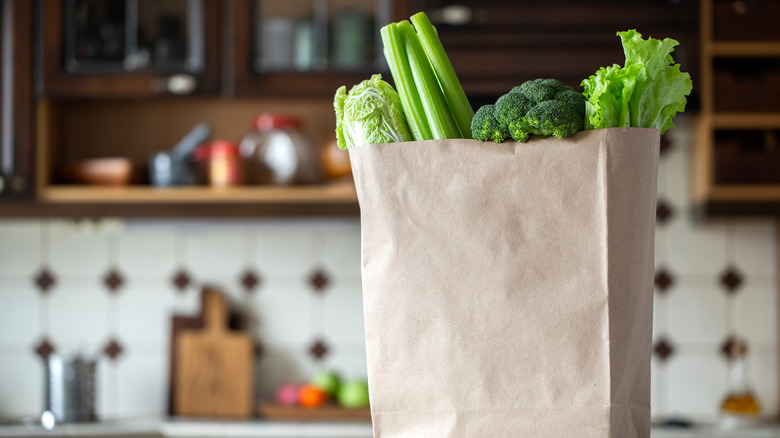How To Rescue Limp Celery And Return It To Its Former Glory
Celery is an essential ingredient in many kitchens, adding crunch to Polish egg salad and crudités spreads, offering a unique flavor pairing for smoky mezcal cocktails, and bringing foundational flavor to the aromatic bases of countless dishes. The French mirepoix, Italian soffrito, German suppengrün, and Cajun Holy Trinity would all be lost without it. As important as this vegetable is, we often buy a bunch to make a pot of soup or salad and are forced to toss the limp, rubbery leftovers out after a week or two.
But limp celery hasn't necessarily gone bad; it's just lost the moisture it needs to look its best. This vegetable is 95% water, so like a potted plant that has gone too long without water, it begins to droop as it loses its hydration. Thankfully this is a completely solvable problem — give your celery a drink overnight, and it will perk right back up, leaving you with a little extra time to use it up.
How to revive limp celery
When you find the celery in your vegetable drawer has lost the firm, crunchy texture we know and love, you know it's looking for a drink of water. To allow it to soak up the moisture it's lost, we have to treat it like the flowers in a fresh bouquet: Trim the ends and submerge.
You want to cut off about a quarter of an inch from the bottom of your celery sticks — scientifically referred to as the petiole, which is essentially the stalk that connects photosynthesizing leaves to the plant's stem. If you purchased a whole stalk of celery, you'll need to cut off the base that holds the cluster of sticks together. If you instead purchased a package of pre-trimmed celery sticks, you'll just cut off a portion of the bottom. The idea here is that you want to remove dried-up ends to expose a fresh cross-section of vascular bundles (those thick strings on the outer edge of your celery), so it can transport water up through the stick.
Once trimmed, place your celery sticks into a glass of water and cover them with a plastic bag, creating a high-moisture environment for them to rehydrate in. Then place the glass in your refrigerator. In 30 minutes, you'll begin to see improvement — and after 24 hours, your celery should be as good as new.
Store celery the right way to avoid the droop
Making sure your celery is properly stored from the start is your best bet for avoiding limp, lackluster sticks down the road. There are two approaches you can take, and the type of celery you purchase will help you determine which method is right for you
If you buy whole stalks of celery that are connected at the base, first remove it from the plastic. While the plastic bag used in the above example enhanced moisture absorption for dehydrated celery, keeping vegetables in plastic for too long can work against efforts to prolong freshness by trapping them with naturally released ethylene gas. This will make vegetables go bad — not just limp — much faster. To maintain maximum moisture and avoid prolonged contact with ethylene, loosely wrap celery in aluminum foil and store it in your vegetable drawer. This method will allow you to use fresh celery for up to a month.
If you buy pre-cut celery or prefer cutting the whole stalk down, you can wash and prep celery to whatever size you desire — sticks for snacking on, slices to use in soups, or a small dice to add to your favorite tuna salad. Then add the celery to a container, and fully cover it with water. This will keep it fresh for up to two weeks if water is refreshed every few days.



